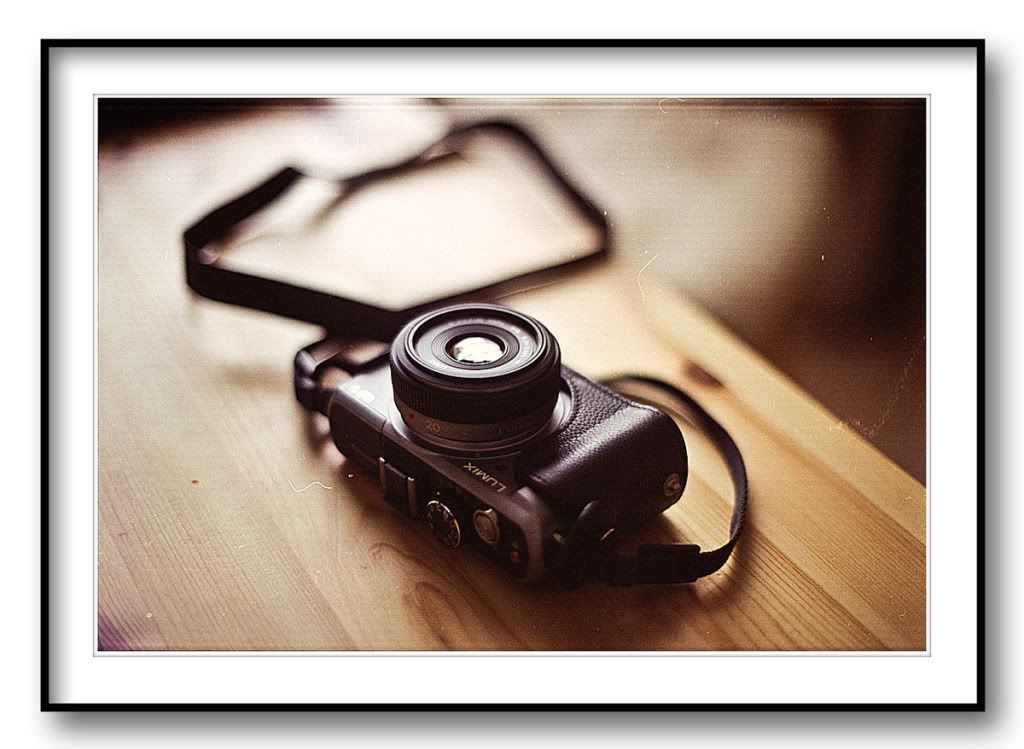
I want to use this blurb to say a few things about this camera: the Panasonic Lumix GF-1. The holy grail of photography; the one thing that photographers have always desired, is a compact camera that is not a compact. Compactness is desirable. Who doesn't want a 'take everywhere you go' camera that fits neatly in the pocket? Normally, if you want to take fantastic pictures when you go on holiday you have to take along an SLR. And everyone knows that SLRs are huge lumbering beasts that require a backpack, a strong back and biceps. They also draw attention to the photographer (due to their size) and are not ideal for spontaneous photography. In addition, they serve as a 'rob me' label around the neck of the bearer. Many people are therefore intimidated into not taking large cameras on holiday. The other factor is the cost. With an array of lenses an SLR system can be prohibitively expensive. Hence, why many people prefer compacts for holiday snaps. The problem, if you happen to be a perfectionist like me who happens to take image making seriously, is that 'holiday snaps' are just that: holiday snaps!
The problem with compacts has always been the sensor. The sensors of all compacts are way too small. This limits the dynamic range which basically means that colour rendition is not as accurate or as rich - greens are not truly green, reds look orange, and blues have a purple hue. In addition the range of colours that a small sensor can record along the electromagnetic spectrum is limited. Apart from colour issues the small sensor has poor low-light performance - it is noisy and has poor high ISO performance. Thus the need to use flash under all but the brightest indoor lighting conditions. And flash is no good. It is harsh and unsightly and brings our flaws in skin. To be honest I have no idea why professional photographers at weddings continue to use flash?
The Panasonic Lumix GF-1 is part of a new breed of Micro Four-Thirds technology cameras. They may be the answer; the holy grail, that photographers have been looking for. What makes these cameras, such as the GF-1, so special is their sensor. The sensors of these cameras are considerably larger than those of compacts. In fact, even though they are considerably smaller then SLR's in body size, their sensor size approaches that of SLR's. Thus they have all the advantages of a large sensor camera. Namely:
i) Much better low light performance (no need for flash but the darkest of situations)
ii) Better 'depth of field' (see below)
iii) Improved dynamic range
But significantly, what raises the bar even higher for the GF-1 in particular, is the lens. The GF-1 comes with a 20mm f1.7 prime pancake lens. The lens, as you can see, is small - but that is not what makes it special. Let me tell you a little about this lens. The first and foremost thing to note is the maximum aperture of f1.7. This baby is bright - it let's in lots of light...if there is light in the room, even a candle, this lens will suck it in like a black hole. To give you an idea, the maximum aperture of most lenses that people normally have on their cameras is about f4.0 - f5.8. These perform poorly under low light conditions. The maximum possible theoretical aperture is f1.0. This baby is an f1.7. The maximum aperture lens you can actually buy is a Canon f1.2 and it'll set you back a hefty £2,000. This lens costs considerably less. In fact the whole camera set up including the 20mm f1.7 pancake lens will cost you about £600.
But a large maximum aperture lens has other 'creative' advantages: the Bokeh. Bokeh is a Japanese word used to describe the quality or amount of blur in the out of focus parts of the image. Bokeh is a highly desirable quality especially in portraiture as it allows the subjects to stand out from the background which is blurred. Technically Bokeh is determined by the 'depth of field' and the depth of field in turn is determined by the aperture. The higher the maximum aperture the better the Bokeh and the greater the depth of field. The image below gives an indication of the Bokeh achievable with this camera.
This is a beautiful camera that has few of the 'size' encumbrances of an SLR. It's not perfect though. There are negatives. For example it lacks a zoom function, so if you want to take a close up from far away say...you can't. You have to physically move closer to the subject. i.e. use your feet! But that is a price you pay for the high aperture lens. But these minor issues (in my opinion) are more than compensated for by the creative potentials that a camera with an f1.7 lens can offer. Not only that, but combine this with speed of focus, receptability, excellent ergonomics, and restrained but sexy aesthetics, and you have a toy that is a real pleasure to use. It brings the fun back into photography. The only thing is - it's not a toy. This is a serious piece of sophisticated photographic hardware and any serious photographer worth his salt would be well advised to get one!
